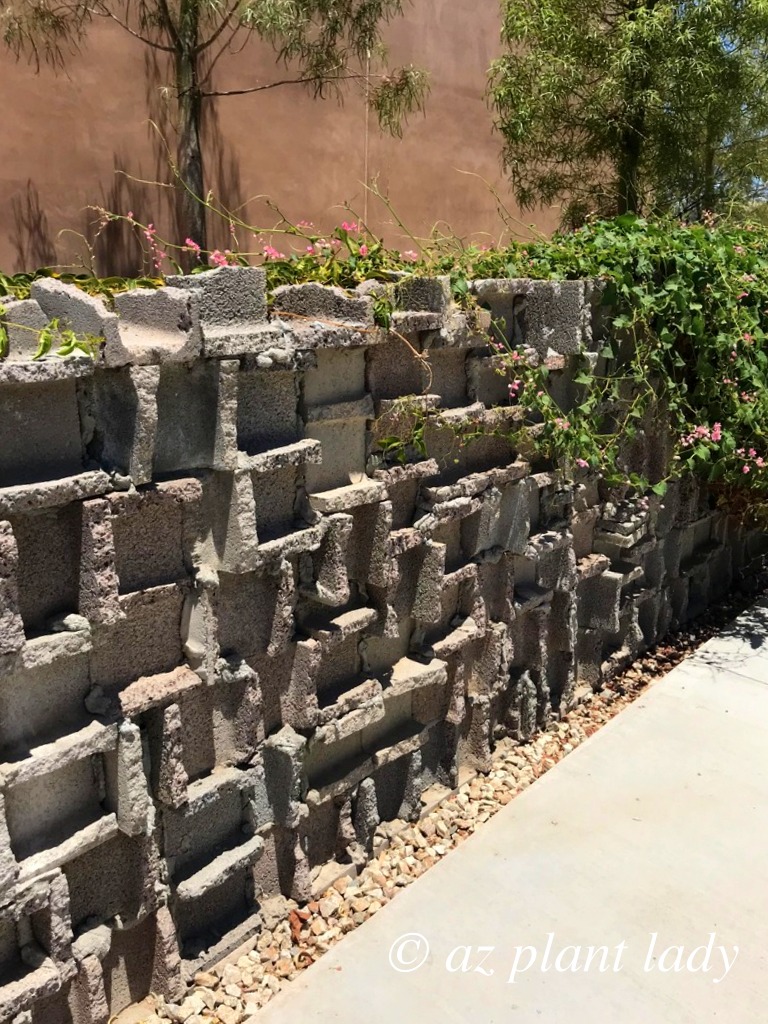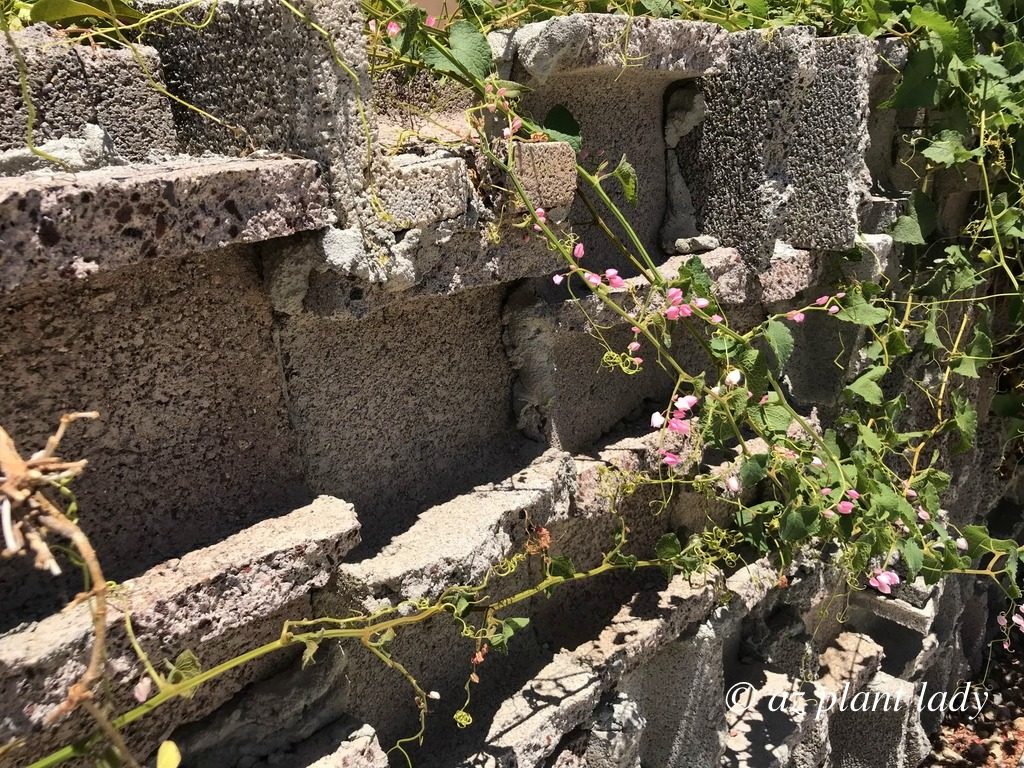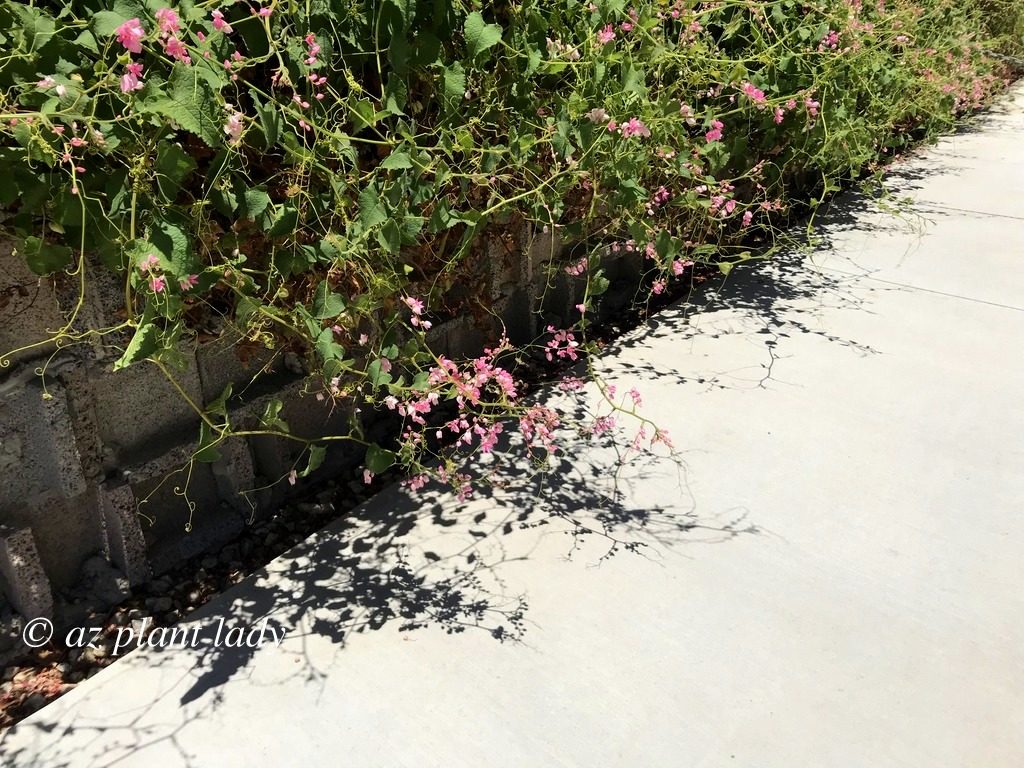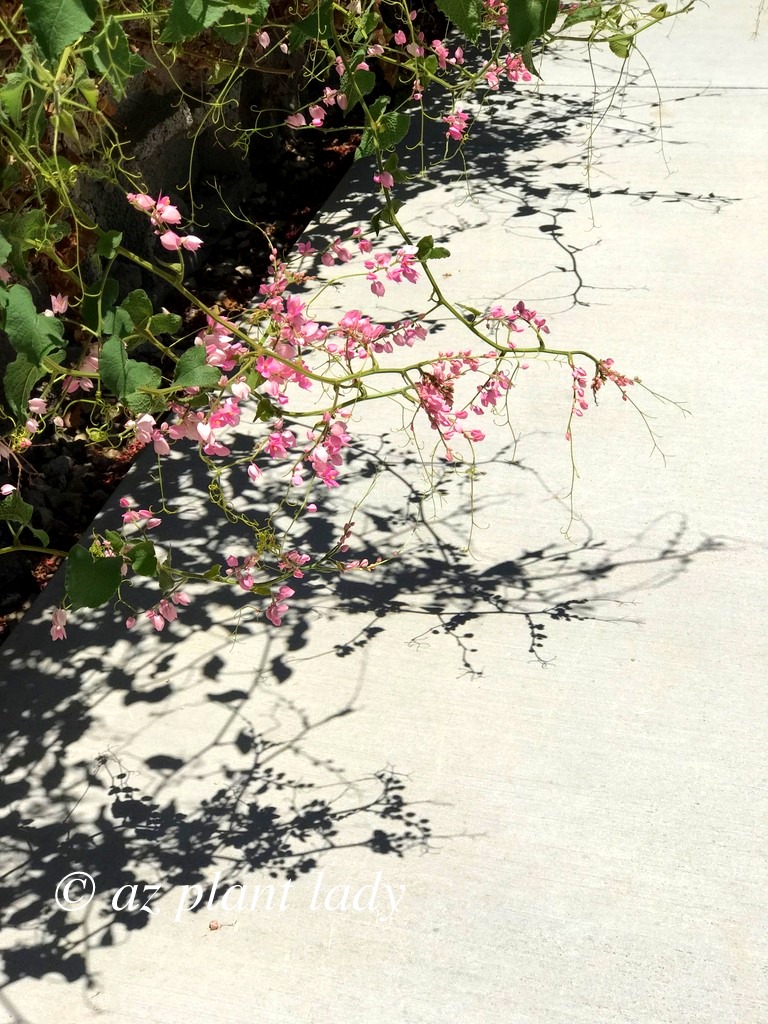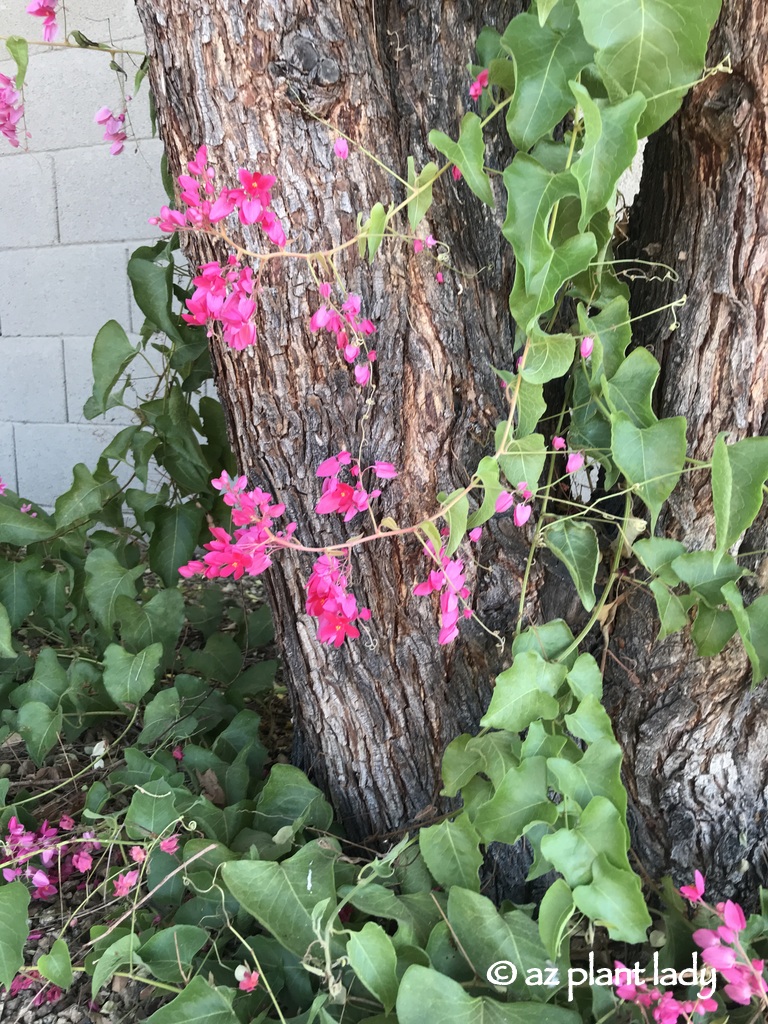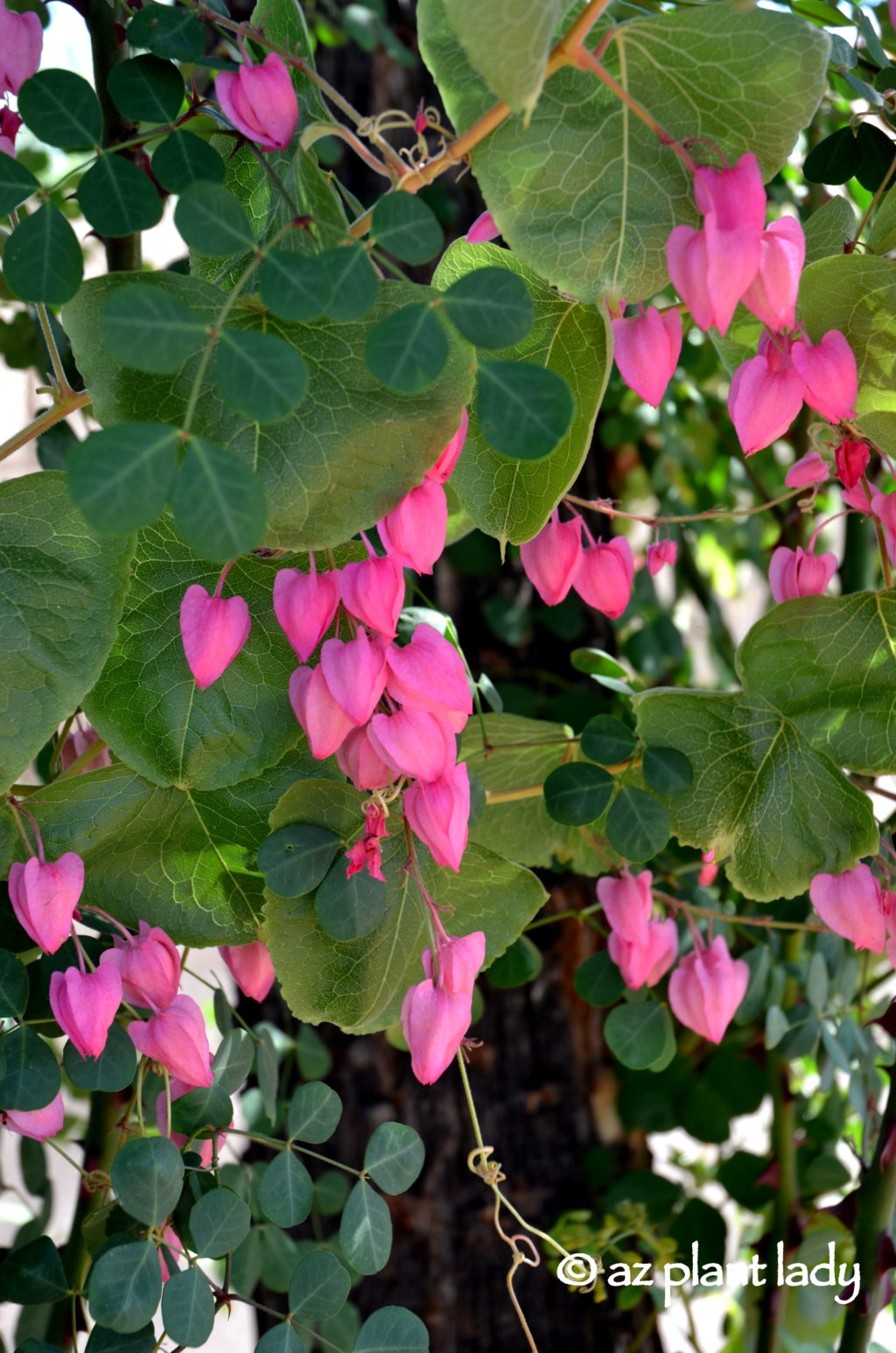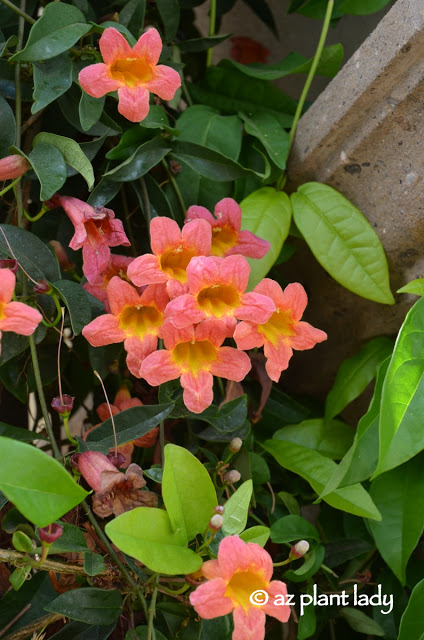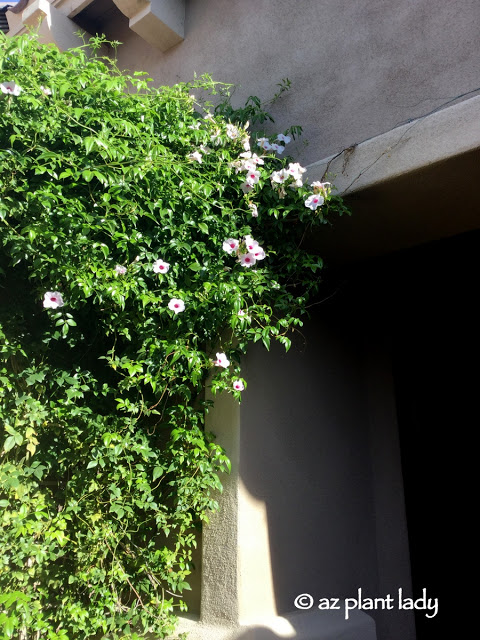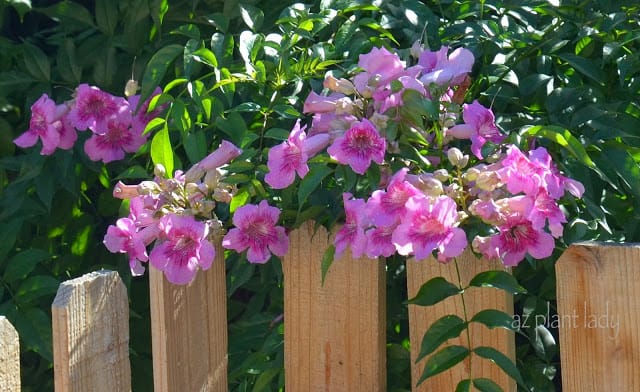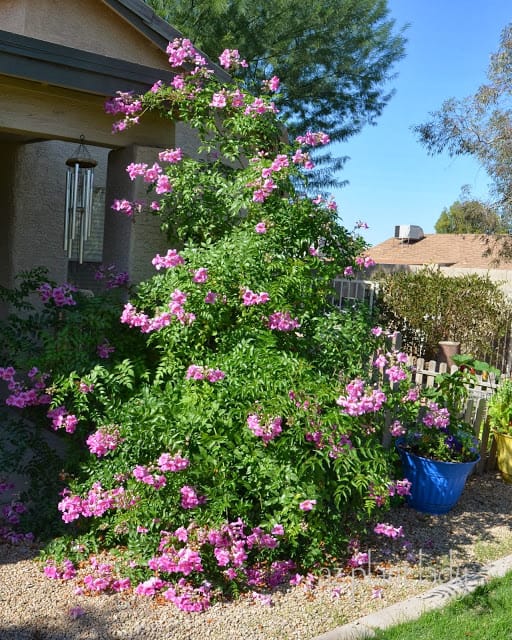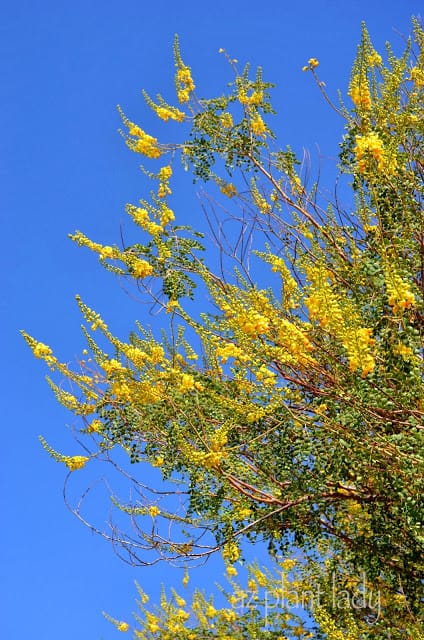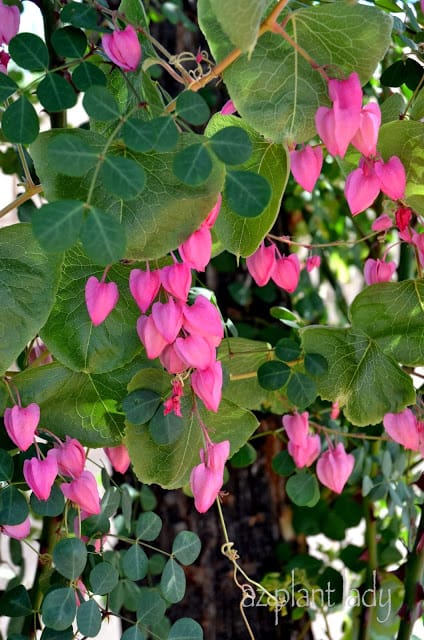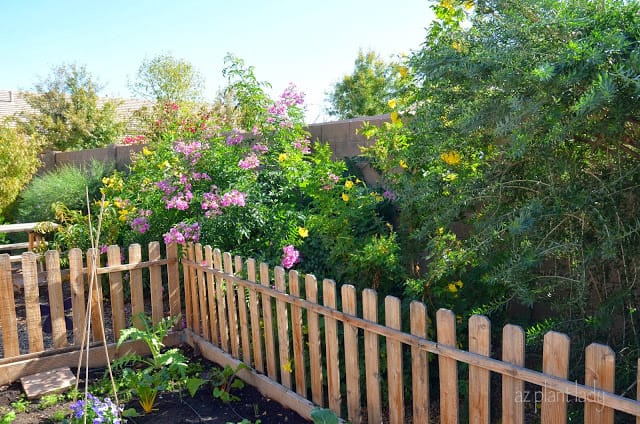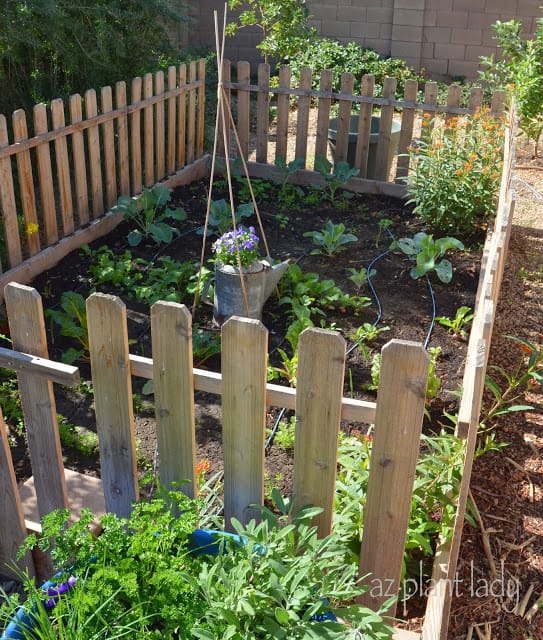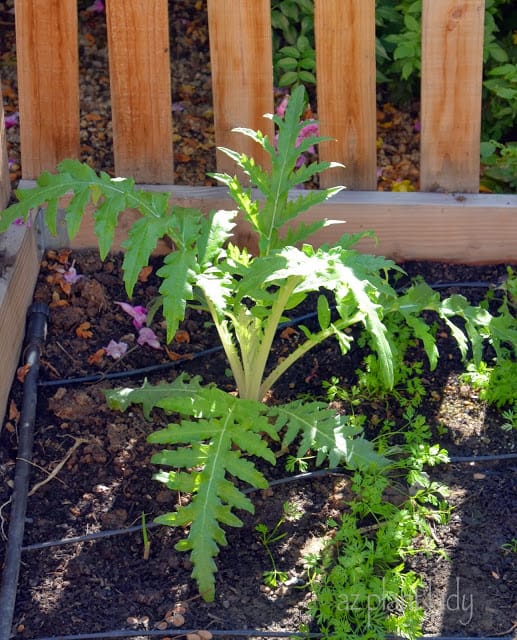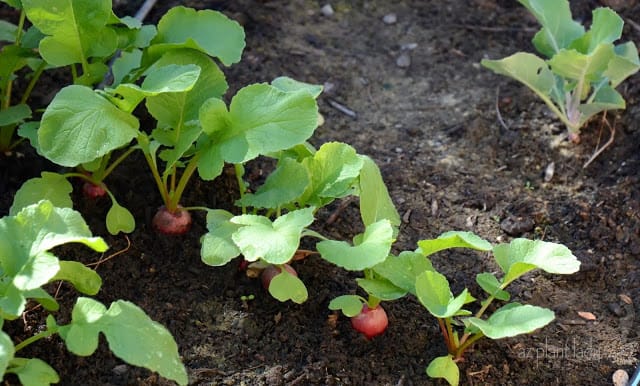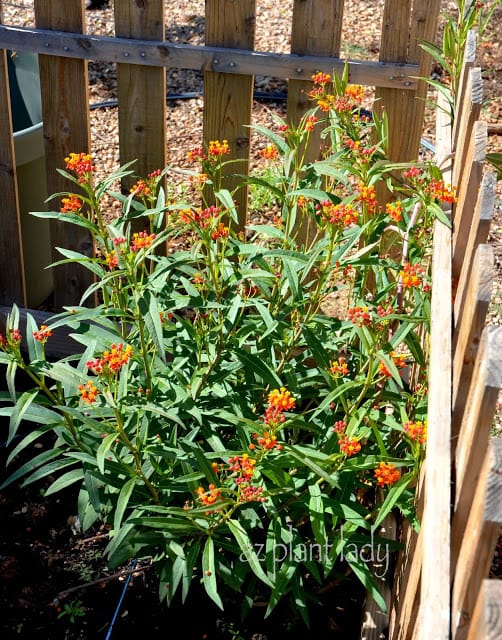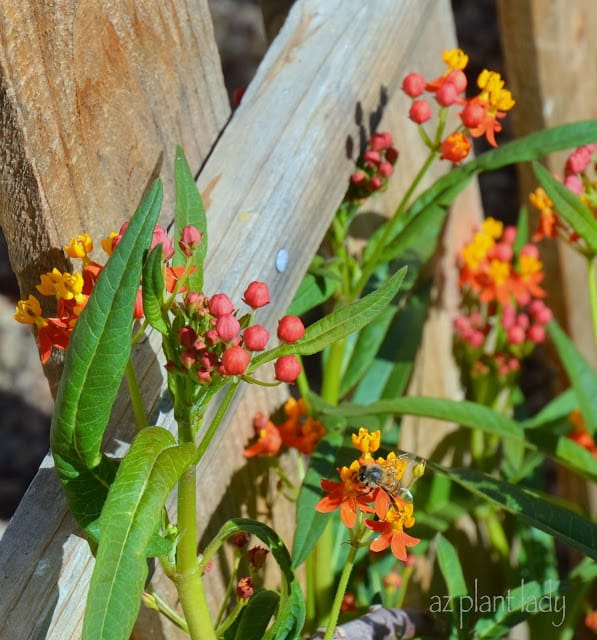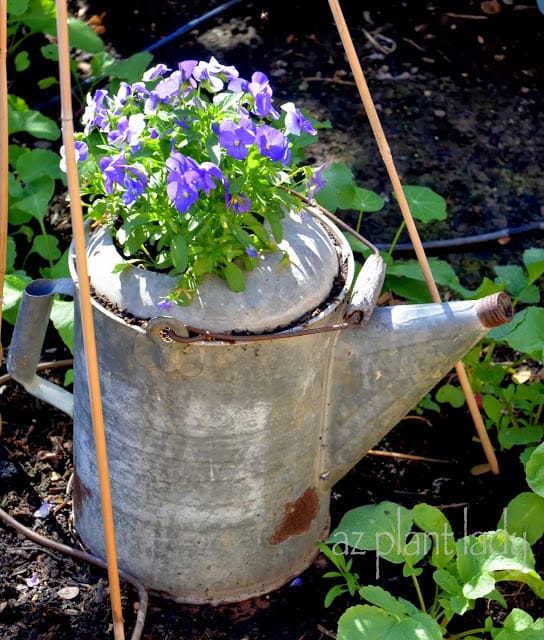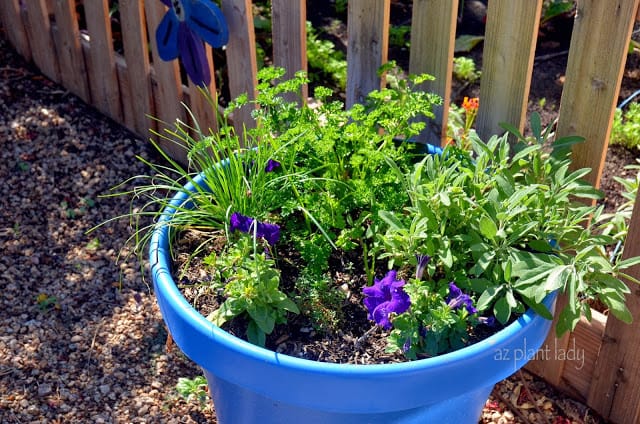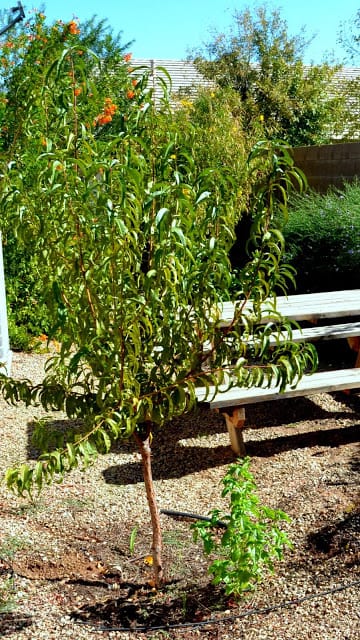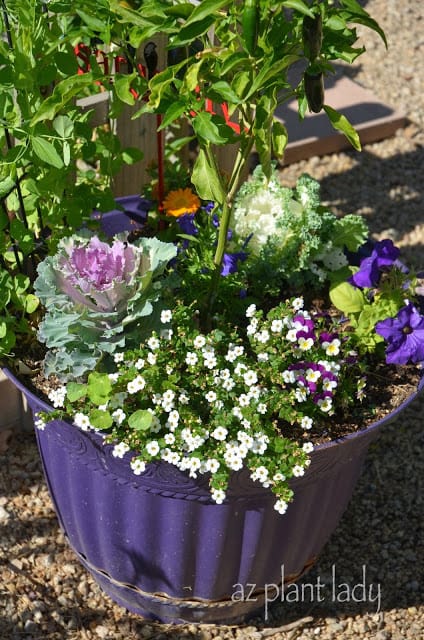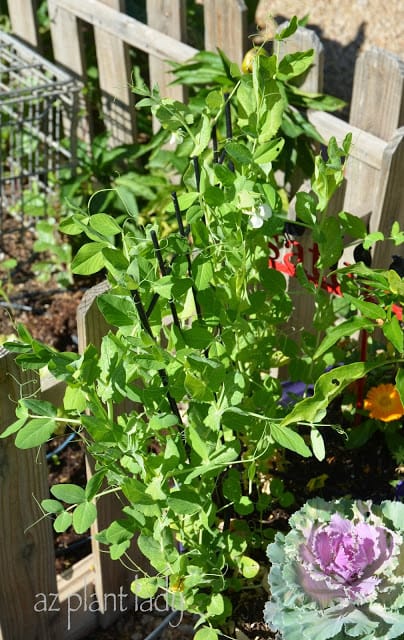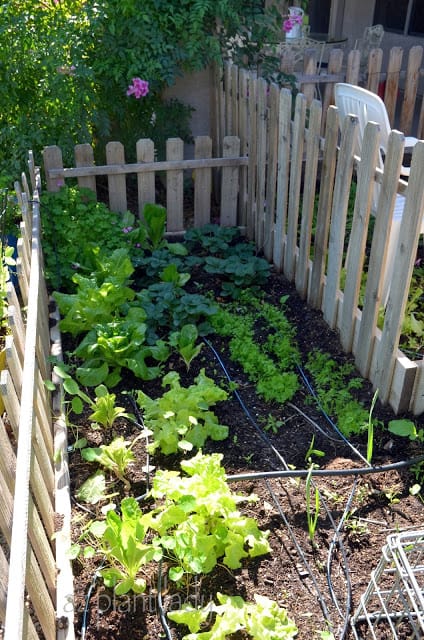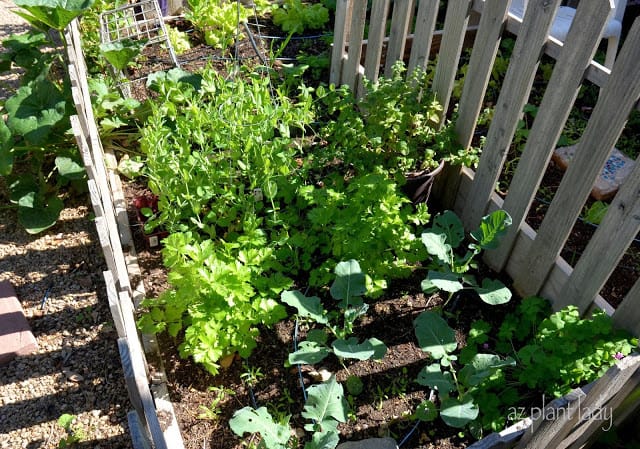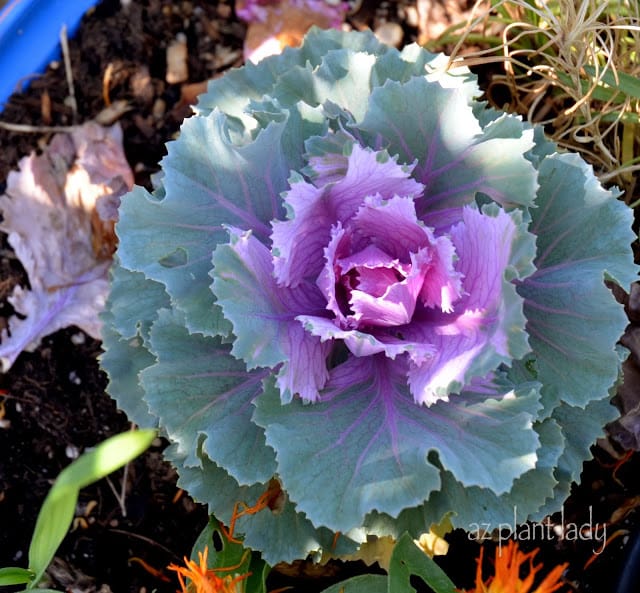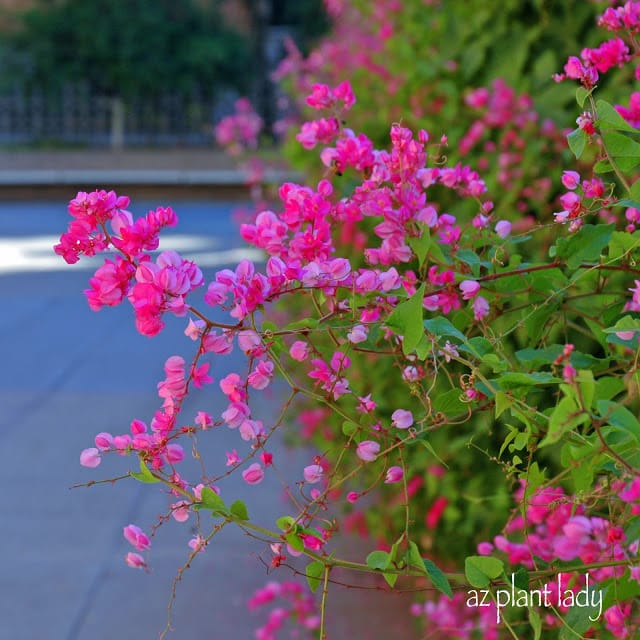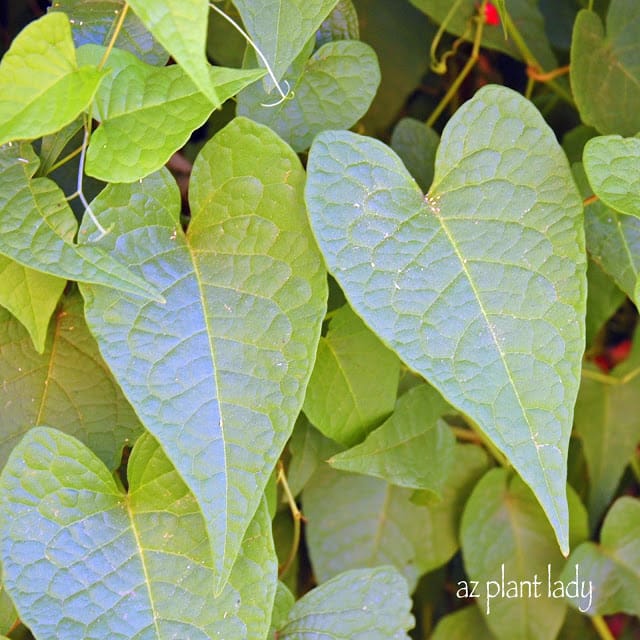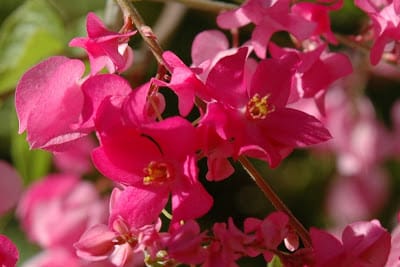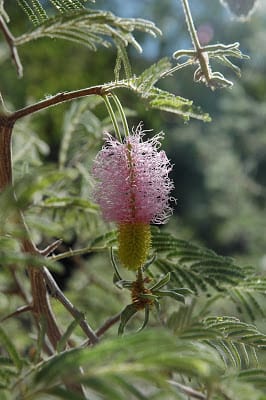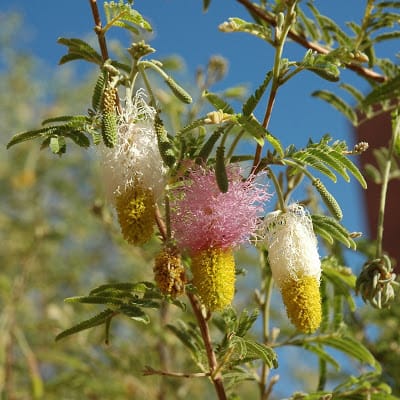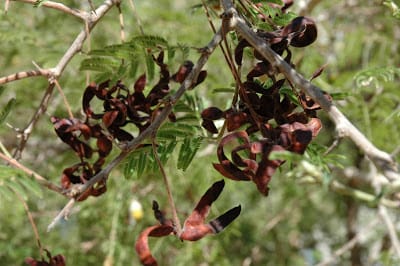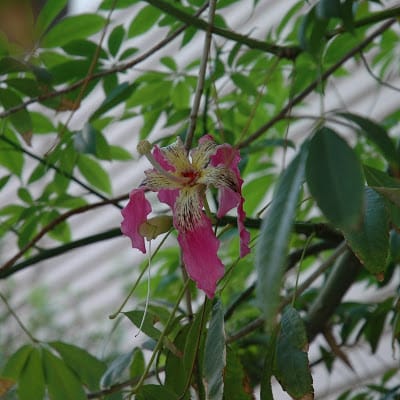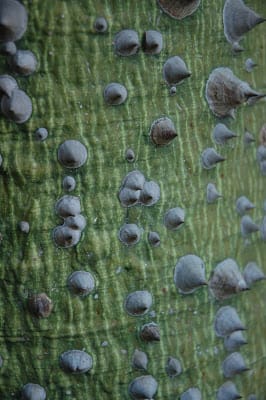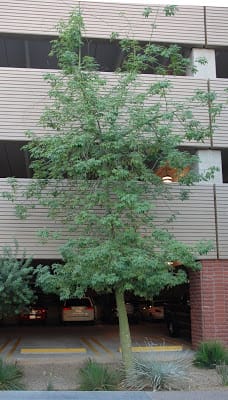My Fall Garden
A few days ago, I received an unexpected gift. This gift was a morning where I had no appointments, I didn’t have to babysit my granddaughter, the kids were in school and I was caught up with all of my garden writing.
So, what should I do with this gift of time?
I spent it in my garden, taking pictures of the plants that make me happy right now.
I’d love to share my favorites with you if you have a few minutes of time…
Pink Trumpet Vine (Podranea ricasoliana)
One of my favorite plants growing in my gardens is Pink Trumpet Vine. It stands at the corner of one of my vegetable gardens. It is in full bloom right now as you can see. Gorgeous pink flowers appear in spring and fall.
It can grow as a vine, with support, or as an open, sprawling shrub, which is how I like to grow it.
Pink Trumpet Vine does suffer frost damage and has even been killed to the ground in winter, but quickly grows back. It is hardy to zone 7.
Cascalote (Caesalpinia cacalaco)
Bright-yellow flower spikes cover my Cascalote tree in fall. I love this small tree for so many reasons.
It is slow-growing, so there is not a lot of pruning required. I love the round leaves that stay on the tree all year unless we get a cold spell of temps in the low 20’s.
Best of all, are the yellow flowers that appear in fall when most plants are beginning to slow down.
*Cascalote are very thorny and I personally think that the thorns are very cool-looking as long as you don’t get pricked. There is a new variety called ‘Smoothie’ that is thornless.
Queen’s Wreath Vine (Antigonon leptopus)
Despite my best attempts, my Queen’s Wreath Vine insists on growing up the trunk of my Cascalote tree instead of up on the nearby garden wall.
But, I love this vine no matter where it chooses to grow. It has heart-shaped leaves and stunning pink flowers that appear in summer and fall.
This is a tough vine that can handle reflected heat and does not need support to grow upward. In winter, it will die back to the ground, but grows back in spring. Hardy to 20 degrees F, or zone 9 gardens.
Gold Lantana
I know that Lantana can seem like a rather boring plant to some – but I wouldn’t write it off, if I where you.
Lantana is not fussy and it’s hard to find a plant that will bloom more throughout the warm months of the year. I have it growing up along my front entry and I really like how it looks.
Maintenance is simple – prune back to 6 inches once the danger of frost is over (early March in my garden), removing all frost damage. Lightly prune back by 1/2 in August and that is all you need.
Lantana are frost-tender and hardy to 10 degrees (zone 7).
My Fall Garden
My side garden is filled with another vegetable garden, apple and peach trees, blackberry shrubs and herbs.
Because I do not like looking out at bare walls, I have Pink Trumpet Vine, Arizona Yellow Bells (Tecoma stans stans), ‘Summertime Blue’ (Eremophila x ‘Summertime Blue’) and Pink Emu Bush (Eremophila laanii) planted along the wall.
These large shrubs are pruned once a year and that is all they need because I have given them enough room to stretch out.
While these flowering shrubs make my bare wall disappear, they also benefit my edible garden in the side yard. First, they help absorb the heat that the walls re-radiate out, keeping temperatures down. Secondly, they also attract pollinators which pollinate my vegetables, fruit trees and blackberries.
Hummingbirds and other feathered visitors like to take shelter in their branches and I get to watch from my kitchen window.
My Fall Garden
In this garden, the vegetables are still rather small. But there is a collection of broccoli, cauliflower, radishes, carrots and Swiss chard.
An newly-planted artichoke is growing nicely next to some young carrot seedlings. This vegetable doesn’t just produce delicious artichokes – they are also quite ornamental.
Just one month after sowing radish seeds, I am harvesting radishes already.
In the corner of my vegetable garden is a Mexican Milkweed (Asclepias curassavica) that I grew from seed.
They are irresistible to butterflies and bees like them too 🙂
I have a rusty watering can that I just love. Every fall I fill it with flowering annuals that will last through spring.
I poked drainage holes in the bottom of the can and put a drip emitter next to the flowers. Once temperatures heat up into the 90’s, it gets too hot for the roots to survive in the pot, so it sits empty during the summer. But even empty, it adds a touch of whimsy to my garden.
In front of my vegetable garden sits my herb container garden. Chives, parsley, sage and thyme are growing nicely. I like to throw in some petunias for additional color.
This young peach tree was planted back in January and is doing very well.
That little plant next to it is a volunteer basil plant. It will die once our first frost appears, so I will harvest it soon.
In front of my other edible gardens sit three brightly-colored pots filled with an assortment of flowers and edible plants.
This one is filled with a jalapeño pepper plant, garlic, ornamental kale and cabbage, bacopa, petunias, violas and red nasturtiums.
Along the back is a small trellis that has sugar snap peas growing on it. They are just beginning to flower.
This is my daughter, Ruthie’s, vegetable garden. She has leaf lettuce, strawberries, carrots and garlic growing in her garden.
This is my youngest daughter, Gracie’s, garden which has celery, broccoli, sugar snap peas, carrots, malabar spinach and radishes growing in it.
*One of my fondest childhood memories was of my dad giving me a raised garden in the backyard of our Southern California home. I was allowed to grow whatever I wanted, which was usually vegetables, violas and cosmos.
Thank you for taking a few minutes out of your day, allowing me to share my favorites in my fall garden.
What is growing in your garden right now?

